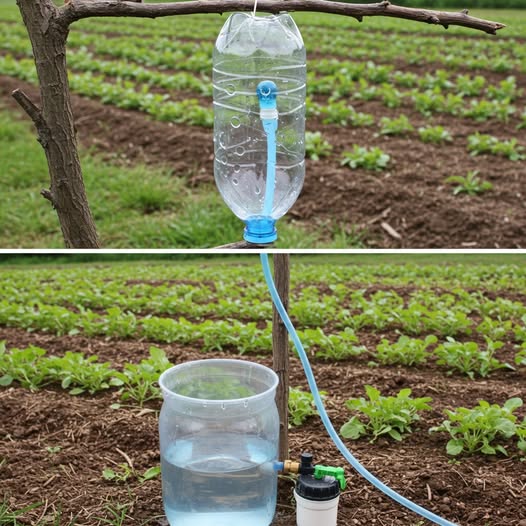ADVERTISEMENT
How to Water Your Plants for a Month at No Cost: The Method Used by Farmers
Are you tired of constantly worrying about watering your plants while you’re away? Whether it’s due to vacation plans, a busy schedule, or just wanting a more efficient method, there’s a simple and cost-effective solution that farmers have been using for centuries. The secret? An innovative watering technique that requires little effort and zero cost.
In this article, we’ll reveal the method used by farmers to keep their plants hydrated for a month or longer without needing to constantly water them or rely on expensive systems.
The Miracle of the Self-Watering Method
Farmers and gardeners alike have learned to make use of natural resources and simple techniques to water their crops efficiently. One such method is known as the “wicking” method, a technique that utilizes gravity, water retention, and natural materials to keep plants watered over extended periods of time.
What Is the Wicking Method?
The wicking method is a simple way to ensure your plants stay hydrated for weeks, without the need for constant watering. It involves using materials that absorb and retain water, creating a slow-release system for your plants. These materials act as “wicking” agents, drawing moisture from a water source and delivering it directly to the soil and roots of your plants.
Farmers, particularly in arid regions or areas with scarce water resources, have been using variations of this method for centuries. They have relied on natural materials and basic techniques to ensure their crops stay hydrated without the need for costly irrigation systems.
How to Set Up Your Own Self-Watering System
If you’ve ever wondered how to keep your plants watered for weeks without spending money on fancy systems or worrying about forgetting to water them, the wicking method might be the perfect solution. Here’s how to set up your own self-watering system using inexpensive materials.
Materials Needed:
- A large container or bucket (a recycled plastic bottle or jar can also work)
- A fabric or rope wick (old t-shirts, towels, or cotton ropes are perfect)
- A large tray or saucer to catch excess water
- A pot or container for your plant (with drainage holes)
Steps to Create Your Self-Watering System:
- Prepare the Container:
- Choose a container that will hold water for a long period, such as a large bucket or recycled plastic bottle. This will serve as your water reservoir.
- If using a bottle, cut it in half to make two pieces: the top will be used as a funnel to feed water to the soil, and the bottom will serve as the reservoir.
- Create the Wick:
- Use an absorbent material like an old cotton t-shirt, towel, or rope. Cut the fabric or rope into long strips, ensuring that it is long enough to reach from the water reservoir into the soil of your plant.
- One end of the wick should be placed in the water reservoir, and the other end will be buried in the soil, allowing it to draw water up as needed.
- Place the Plant:
- In your plant’s pot, make sure the soil is well-prepared, with a good drainage system. You can add pebbles at the bottom of the pot to improve drainage and ensure that the water flows evenly.
- Dig a small hole in the soil to place the wick, then carefully bury the other end of the wick so that it can slowly release moisture into the soil.
- Connect the Water Reservoir:
- Place the water reservoir directly below the pot or alo
- Place the water reservoir directly below the pot or alo
